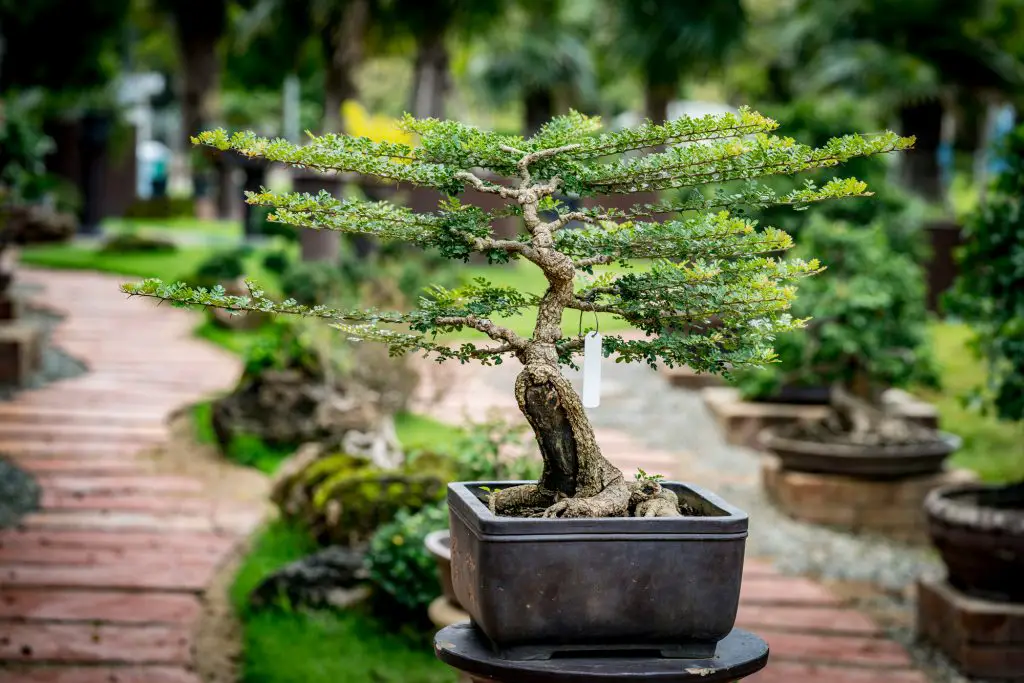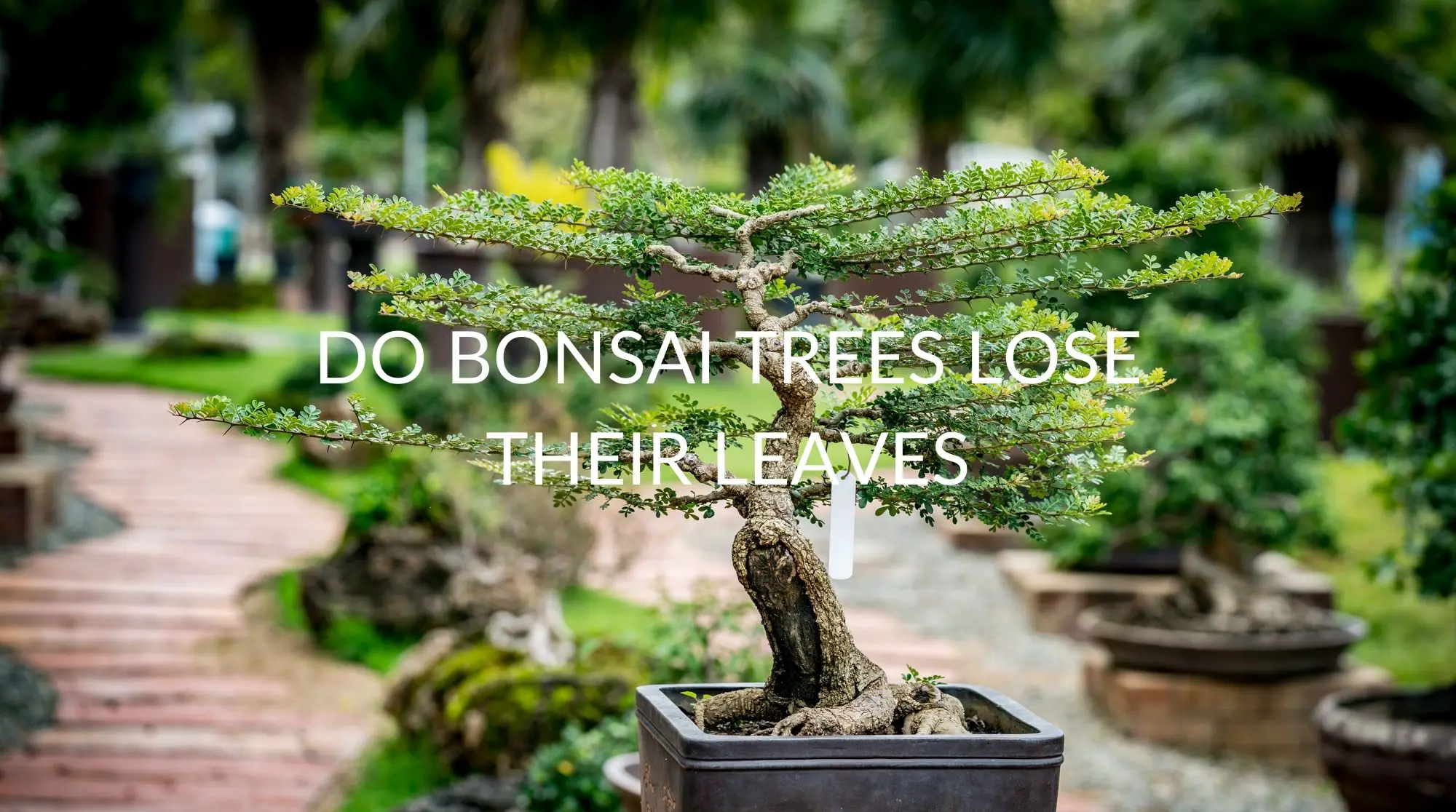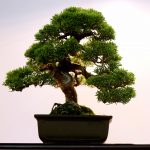Bonsai trees are gorgeous plants that need a lot of particular care. Otherwise, they may start to lose their luster, leading to some of their leaves dropping. If you notice leaves are starting to fall from your tree, there are ways to revive it and prevent leaves from falling again.
Do Bonsai Trees Lose Their Leaves?
Bonsai trees can lose their leaves, though this will often be a slow process that you can catch in time. It’s important to know which bonsais can be grown indoors, as well as which ones are better suited for outdoor living. Furthermore, distinguishing between what is normal and abnormal loss takes experience.
Bonsais are also known for being very particular about their preferred climate. Depending on where you live, you may need to make some effort to acclimate your bonsai appropriately when the seasons change. Knowing the species of bonsai you’ve brought home will assist you in providing them with the necessary living conditions.
Do Bonsai Trees Lose Their Leaves In Winter?
If your bonsai starts to lose leaves in winter, it’s not entirely uncommon. If you have an evergreen or deciduous bonsai that you’re growing outdoors, they can typically handle most winters. If the winters where you live are especially harsh, then you might have to consider bringing your outdoor bonsai inside.
Many bonsai trees will also have to go dormant in the winter. This is their way of resting and retaining their nutrients in order to survive the colder weather. Once spring comes, they are ready to end their dormancy, at which point it’s recommended you move them to a new pot with fresh soil and help them ease out of it.
Outside of repotting a bonsai, you’ll also have to keep the temperature in the room between 50 to 64 degrees Fahrenheit and keep them in the shade for a few weeks. During this time, you’ll likely see some leaves come off, which is perfectly normal.

Do Bonsai Trees Lose Their Leaves In The Fall?
There are certain species of bonsai trees that will naturally start to drop some of their leaves as fall comes about. A Chinese elm, for instance, tends to start losing leaves in September, and it will continue into October. It’s most common to see leaves naturally fall from outdoor bonsai trees in the fall, just like with many other types of trees.
This might alarm one who hasn’t owned one of these trees but rest assured, as often as the leaves fall, there should be new buds that emerge. Be sure to keep your bonsai well taken care of during this time by giving it the appropriate dose of fertilizer and keeping it watered.
Why Does A Bonsai Drop Its Leaves?
There are a few causes for dropping leaves, many of them to do with simple mistakes made when taking care of your bonsai.
Underwatering
Knowing what type of bonsai tree you have can help you avoid underwatering them, which can lead to your tree losing leaves. Your bonsai can dry out easily without getting enough water, and one of the first signs you’ll notice is that leaves are starting to dry up and fall off the branches.
Overwatering
Overwatering can cause your bonsai to become ill, which will manifest in falling leaves, among other things. With how bonsai pots are structured, an excess of water has nowhere to go and will pool up in a bonsai’s roots, which can cause many issues for these trees. Failing to keep track of when you’ve watered your tree can make it very easy to give it too much water.
Pests
You should be sure you look out for bugs getting into your bonsai, even if they’re indoors. Pests can wreak havoc on your bonsai’s health, causing leaves to lose their appeal and even fall off.
Typically, leaves fall off pretty quickly because of pests eating away at them or soaking up all of their much-needed nutrients. Pests can also spread to other plants in your home. The remedy for treating bonsai pests is different depending on the type of pest.
Inadequate Sun
Bonsais need access to a lot of sunlight to stay healthy. They love the sun, and they aren’t able to receive as much light as they need through artificial means. Placing your bonsai in a windowsill where sunlight is going to shine directly onto them is often recommended.
Lack Of Nutrients
Your bonsai is also going to need the occasional dose of fertilizer in order to receive adequate nutrients. If your bonsai is starving for those particular nutrients, it may start to wither and lose leaves. Each type of bonsai will require its own type of fertilizer, so knowing the particular species you bring home is ideal.
Stress
Plants can become stressed, and stress can cause bonsais to lose a few leaves. Simple things such as repotting – which is necessary for bonsai every now and then – can temporarily cause your bonsai to stress out as they adjust to their new environment. As a result, some leaves will likely fall off.
Illness
Bonsais can get sick, and many of those illnesses will cause these trees to lose their leaves as they start to deteriorate. Some illnesses to look out for include root rot, fungal disease, mildew, and black spot. It can be a little bit more difficult to revive a bonsai when it has become sick, but it’s not impossible.
Do Bonsai Leaves Grow Back?
Many of the reasons that a bonsai will lose leaves can be taken care of with relative ease. The likely culprit is that your bonsai needs a different level of care; perhaps their watering schedule needs to be adjusted, they need a different pot, or they are missing out on some fertilizer.
These changes won’t result in an immediate recovery, but over a few weeks, you should see leaves starting to grow back on your tree.
How To Revive Bonsai Tree With Leaves Falling Off
Don’t be too alarmed when you notice falling leaves; there are some things you can do to revive your bonsai tree before it’s time to say goodbye.
Give Your Bonsai Time To Recover
If your bonsai has been overwatered, you’ll want to let the soil dry. This doesn’t mean you will want to stop watering it; just water it less. Once the texture of your soil feels drier, and your bonsai looks to be coming back to life, your bonsai should be able to handle being repotted with a high-quality soil with adequate drainage.
Rehydrate Your Bonsai
If your bonsai appears to be losing leaves because you aren’t watering it enough, you can put it through a replenishment process to get your tree enough moisture. This process should be done carefully to avoid stressing out your bonsai, which could make the situation worse.
You’ll want to slowly pour water into your bonsai’s soil until you notice that water is starting to drip out of the drainage holes of the pot. Once this happens, let the water continue to drip out for about half an hour. You can repeat the process if you feel as though it’s necessary or if your bonsai is especially dried out.
You can also choose to spritz your tree occasionally with water out of a spray bottle. This will help you replenish its moisture without overwhelming it with too much water.
Change The Bonsai’s Pot
Your bonsai needs to be repotted occasionally into healthy, fresh soil that can drain water efficiently. The pot also needs to have good drainage, so your bonsai’s roots don’t drown in water. A pot with only one or two drainage holes isn’t likely to be sufficient. Pots also need to be fairly wide and shallow, with ample room for the bonsai’s roots to spread out.
Get The Right Soil
You want to choose soil that retains water, but not too much water. Soil needs to have proper drainage, just as your bonsai’s pot needs adequate drainage; these two factors work symbiotically to ensure your bonsai only gets the water it needs.
Get The Right Fertilizer
Fertilizer is like food for your bonsai. Determine what kind of bonsai you have and find the right fertilizer for that particular species; a little bit of research goes a long way. Your bonsai will only need fertilizer occasionally, and it’s fairly easy to tell if your bonsai hasn’t had enough fertilizer. Once a month is normally all your bonsai needs, though some types need less.
When a bonsai is starving for fertilizer-based nutrients, its leaves will start to change color; they will go lighter, and then they’ll eventually fall off. On the other hand, too much fertilizer will start to make the leaves look more muted and dull, and then they’ll finally fall off.
Implement Proper Watering
Too much water and not enough water are both bad for your bonsai. Make sure you water them based on the moisture in the soil; if you push your finger in the soil and notice it feels dry, your bonsai will need some water.
How Can I Prevent My Bonsai From Losing Its Leaves?
There’s a certain learning curve that exists when you decide to care for a bonsai. Many of their issues can be prevented with a little bit of forethought.
Know If Your Bonsai Is Temperate Or Tropical
A bonsai’s care depends on its species. Tropical and subtropical bonsais are best suited for indoor growing in most climates, as they will need you to keep the temperature of their living space within certain parameters.
Having a way to manipulate the temperature in your bonsai’s living space is also very important to ensure it doesn’t get too hot or cold. Indoor bonsai trees will need to remain in temperatures between 60 and 80 degrees Fahrenheit most of the time.
Outdoor bonsai trees will naturally lose leaves as fall passes and winter approaches, but you still need to be sure that the climate in your region is suitable to your outdoor bonsai’s needs.
Be Sure Your Bonsai’s Pot Has Proper Drainage
Your bonsai’s pot needs to be chosen carefully; there must be more than one drainage hole so that the water doesn’t pool at the bonsai’s roots. This can be detrimental to your bonsai’s health, regardless of the species.
Choose Soil With Efficient Drainage
Even if your bonsai’s pot has enough drainage holes, if the soil cannot drain water, the pot won’t do much good. The soil needs to retain water to feed into the tree, but not to the point where the roots are being drowned.
You’ll have to choose your soil depending on the specific bonsai you have at home. Generally speaking, lava rock, pumice, and Akadama are some common recommendations to have a bonsai live in.
Test Your Soil Before Watering
Even if it’s time to water your bonsai, it’s worth doing a quick finger test to determine whether or not your bonsai actually needs it. You can do this by pushing your finger into the soil; go about one inch deep.
If the soil feels dry, you should give your bonsai its regular watering. Otherwise, you can recheck it at the end of the day or on the next day, or just give a small spritz of water from a spray bottle.
Fertilize Appropriately
A bonsai needs to have occasional fertilizer added to its soil to ensure it retains the right amount of nutrients. These nutrients will not come from the sun and water alone. Even if your bonsai lives indoors all year, you don’t want to neglect the fertilizer. Using an organic fertilizer will be the easiest to control, and it will have the greatest impact on the health of your bonsai.
Your best course of action is to opt for a slow-release, organic liquid fertilizer that is mixed with water and applied to your bonsai’s soil once or twice a month. Solid fertilizer doesn’t need to be applied as frequently; stick to using solid fertilizer once or twice a year.
Move Your Bonsai To Appropriate Sun
Indoor bonsai trees do well when sitting in a windowsill, as they enjoy the amount of direct sun they can get this way. If you are experiencing a lack of sun and you’re concerned, you can purchase fluorescent lights with spectra that will help make up for the lack of sunshine. These are only supplemental; they cannot replace adequate sunlight completely.
It’s important to note that there are some outdoor bonsai trees that don’t handle the constant sun as well as some indoor species. For these trees, you might want to give them the occasional break from the sun in an area of shade for a few hours, or when the sun is at its hottest point.
Frequently Asked Questions
Every type of bonsai comes with its own quirks. This means you’ll have to tailor your care to your individual bonsai’s specific requirements based on the species you have.
Do Deciduous Bonsai Trees Lose Their Leaves?
Deciduous bonsai trees often lose leaves as part of their natural transition into winter dormancy. In order to remain a healthy tree, deciduous bonsai trees will need to go dormant in the winter.
Depending on the climate where you live in the winter, you should either move your bonsai outdoors to initiate winter dormancy or create adequate conditions indoors to encourage dormancy.
Do Chinese Elm Bonsai Trees Lose Their Leaves?
Chinese elms are known to lose leaves when they adapt to a new environment. You may notice this when you bring a Chinese elm home. This is a temporary and completely expected process and should only last about two to five weeks at the most.
Do Jade Bonsai Trees Lose Their Leaves?
The jade bonsai will naturally shed some of its leaves as part of its growth. What you want to look out for to determine whether or not lost leaves are part of this natural process is if new leaves are taking their place.
Do Japanese Maple Bonsai Trees Lose Their Leaves?
The Japanese maple is also a deciduous bonsai tree, meaning they need to experience winter dormancy in order to remain healthy. Thus, leaves are naturally going to drop as the season changes.
Recap
Growing a healthy bonsai isn’t an easy feat. You have to be attentive and somewhat knowledgeable about what kind of bonsai you’ve brought home so that you can create the proper conditions for your bonsai to thrive.
When a bonsai loses leaves, the likely culprit is improper watering. Other likely causes can include the need for some type of environmental change; your bonsai may need more sun, a new pot, new soil, or a combination of these factors. It’s less common for your bonsai to lose leaves because it’s sick or there are pests involved.
Thankfully, no matter the reason your bonsai is dropping leaves, where there’s a will, there’s a way to bring your bonsai back to life and have it flourish once again.







